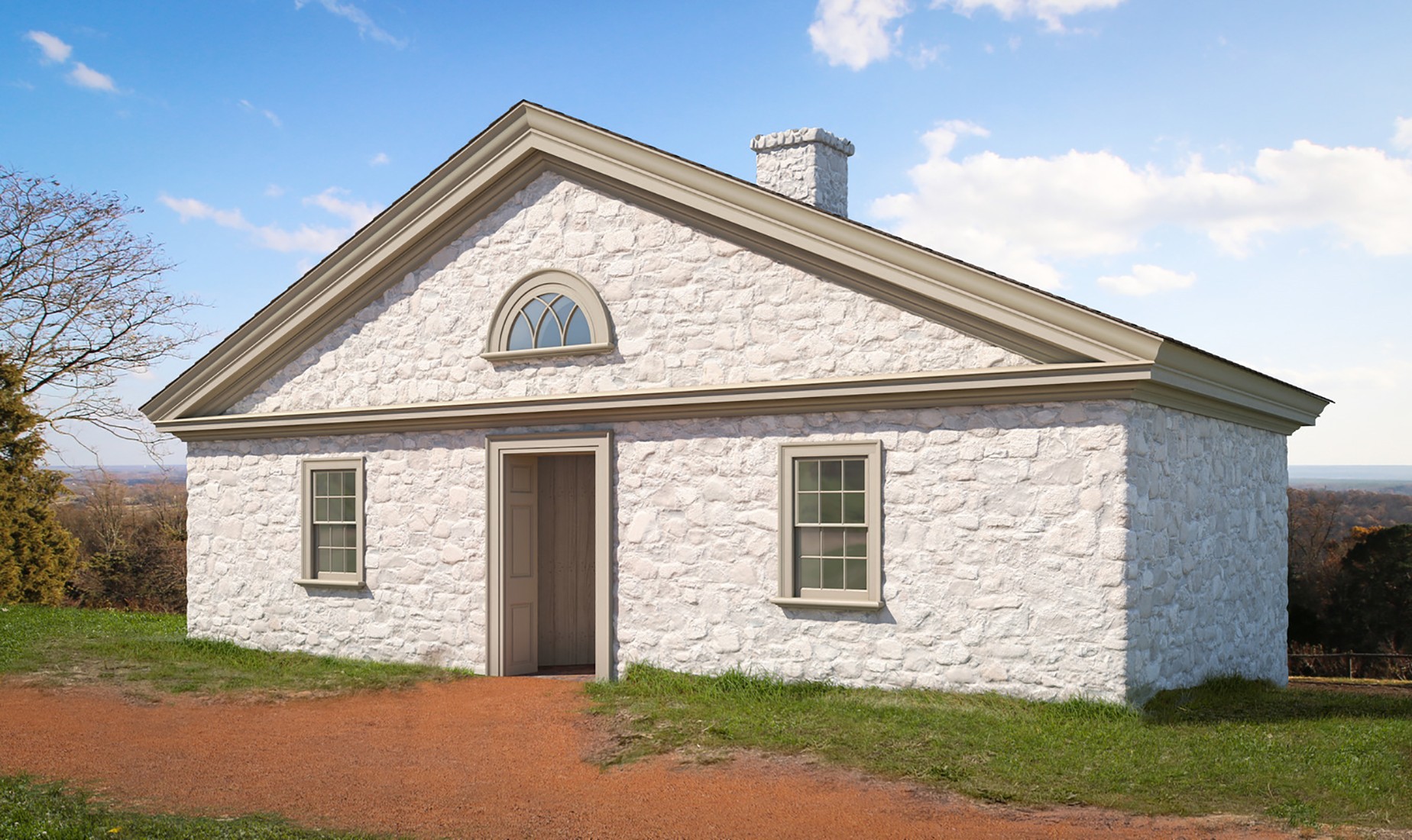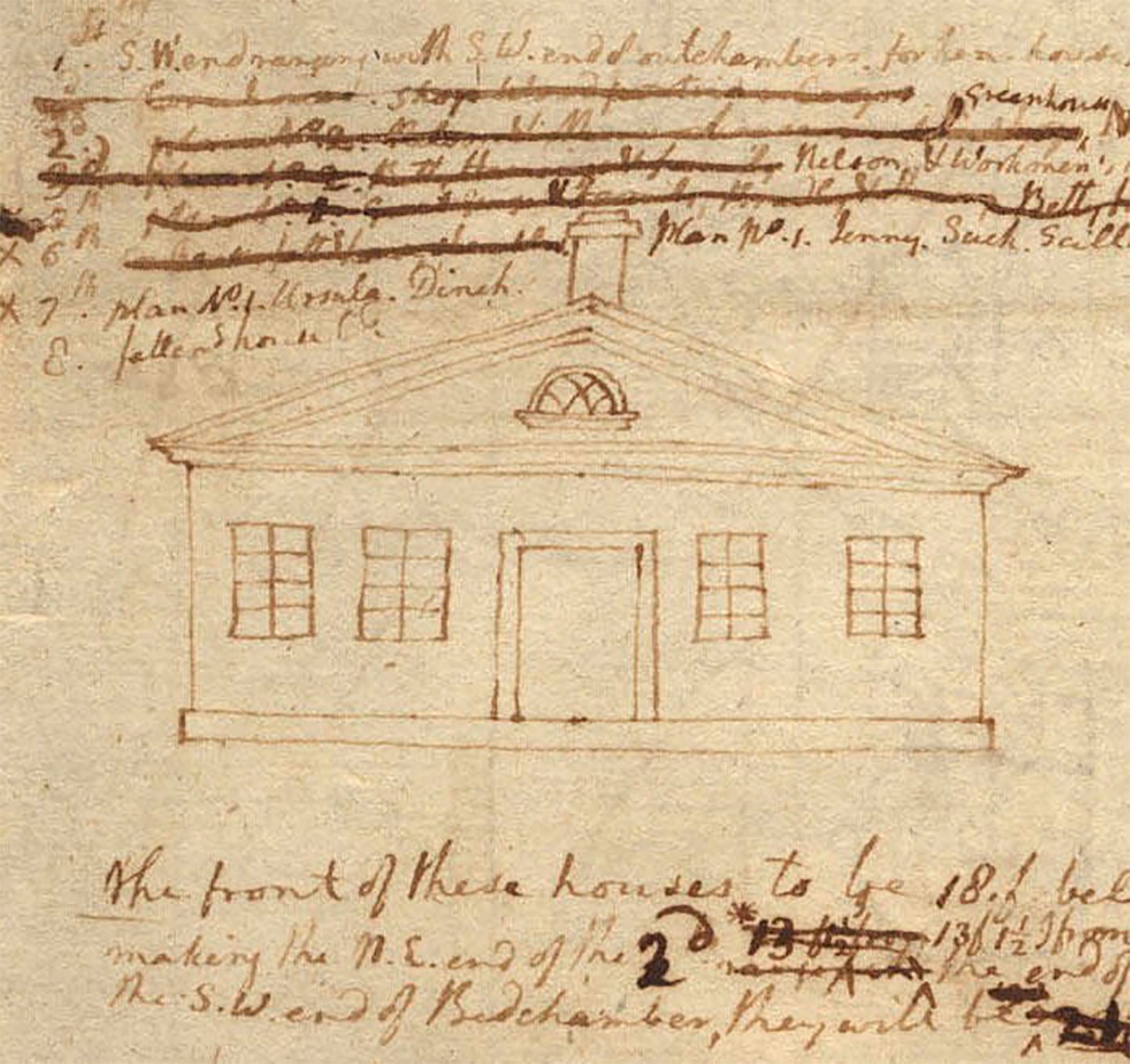Labeled by Jefferson as "E. stone outhouse" in the 1796 Mutual Assurance Plat.
This 17 x 34-foot mortared stone structure was one of the earliest on Mulberry Row. From its construction about 1776, the workmen’s house served as living quarters for free or enslaved workers. During the two periods of building and remodeling of the main house (1769–83 and 1796–1809), highly skilled white woodworkers and masons lived here, including brickmasons Hugh Chisholm and Richard Richardson and joiners James Dinsmore, John Holmes , James Oldham, and John Neilson. During the interval between the construction and remodeling of the main house (1784–96), this building housed enslaved house servants, principally members of the Hemings family.
By 1815, this structure became a textile workshop. Jefferson introduced mechanized cloth production to his plantation when trade embargoes and looming war cut off the supply of imported British cloth. The Herns, Gillettes, and other enslaved families produced summer-weight cotton and hemp as well as winter woolens. This coarse cloth provided clothing for as many as 140 enslaved men, women, and children on the plantation.
Videos about the Textile Workshop

The Technology of the Textile Workshop

The Operation of Monticello's Spinning Jenny

The Twisting in the Fiber - How Spinning Works

The Life of Nance Hemings, an Enslaved Weaver
Enslaved residents:
- Critta Hemings (b. 1769) and other Hemings family members (ca. 1784–92)
White residents:
- Richard Richardson, brickmason and overseer, 1796–1801
- James Dinsmore, joiner, 1798–1809
- James Oldham, joiner, 1801–04
- John Neilson, joiner, 1805–09
Enslaved textile workers:
- Maria (b. 1798), trainee spinner, 1813
- Sally (b. 1797), trainee weaver, 1813
- Eliza (b. 1805), quiller, 1815–
- Dolly (b. 1794), weaver, 1815–
- Mary Hern (b. 1780), weaver, 1815–
- Cretia Hern (b. 1779), cotton spinner, 1815–
- Harriet Hemings (1801–after 1822), wool spinner, 1815–
- Isabel (1800–1822), hemp spinner, 1815–
- Nanny (b. 1799), hemp spinner, 1815–
- Agnes Gillette (1798–1817), spinner, 1815–
- Isaiah (b. 1800), carder, 1815–
- Randall Hern (b. 1802), carder, 1815–
- Israel Gillette (1800–c. 1879), carder, 1815–
- John Hern (b. 1800), carder, 1815–


